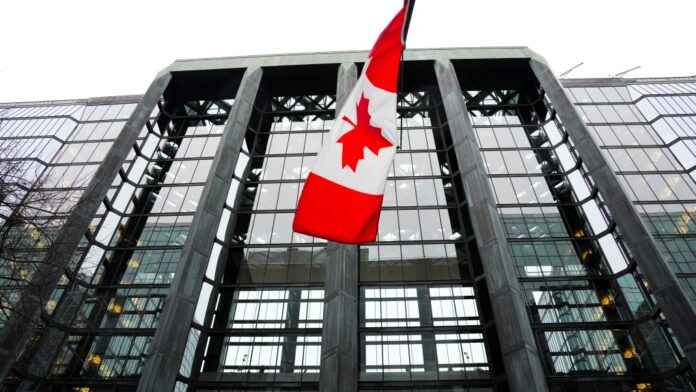OTTAWA –
The Bank of Canada is expected to hold interest rates steady this week as inflation continues to slow, although other data suggests the economy is still running hot.
The central bank is expected to announce its next rate decision on Wednesday. The announcement is accompanied by updated economic forecasts for growth and inflation in its quarterly monetary policy report.
BMO chief economist Douglas Porter said that although the economy is growing faster than expected, lower-than-expected inflation will convince the Bank of Canada to keep interest rates on hold at 4.5 percent.
“Certainly if we combine all these things, it looks like the (central) bank is likely to keep rates steady for now,” Porter said.
For months, the economic data on which the Bank of Canada bases its interest rate decisions has been sending mixed signals about the state of the economy.
So far this year, growth and jobs have been stronger than expected, even as the Bank of Canada’s interest rates are at their highest levels since 2007.
After a slight decline in December, real gross domestic product grew by 0.5 percent in January. Statistics Canada’s preliminary estimate says the economy grew again by 0.3 percent in February.
Karyne Charbonneau, executive director of economics at CIBC, says a closer look at the economic growth numbers shows there may not be too much cause for concern.
“Part of the strength we’re seeing in GDP seems to be the unwinding of some supply disruptions, which is actually a good thing for inflation,” Charbonneau said.
Meanwhile, companies continue to hire. In March, Canada’s economy added 35,000 jobs, bringing the total number of jobs created over the past six months to almost 350,000.
The unemployment rate also remained stable at five percent for the fourth month in a row. This is just above the all-time low of 4.9 percent reached in the summer.
While this continued strength in the economy isn’t necessarily what the Bank of Canada would like to see, lower inflation is good news.
In February, Canada’s annual inflation rate fell to 5.2 percent, meaning inflation was lower than forecast for the second straight month. The headline inflation slowdown comes as supply chains recover and commodity prices fall.
Monthly inflation data shows that inflation is actually much closer to the Bank of Canada’s inflation target of 2%.
With prices rising sharply, most of which took place in the first half of 2022, Canada’s inflation rate is expected to fall significantly in 2023, with most economists forecasting a fall to around 3 percent by mid-year.
As long as inflation continues to fall as expected, the Bank of Canada does not plan any further rate hikes. It declared a conditional pause in rate hikes earlier this year, but has kept the door open for more hikes if needed.
The Bank of Canada appears cautiously optimistic that its aggressive rate hikes between March 2022 and January 2023 – during which the policy rate rose from near zero to its highest level since 2007 – will be strong enough to quell inflation.
The impact of higher interest rates, which are fully felt in the economy, is expected to continue for up to two years and continue to spread through the economy and hamper growth.
Recent Bank of Canada surveys also show that consumers and businesses are bracing for a slowdown. Consumers reported plans to limit travel and dining out to save money. Meanwhile, companies expect their sales to slow.
And while labor shortages were still a top concern for businesses, the survey found signs that both the labor market and wage growth are slowing.
“The survey results actually show that the rate hikes are working,” Charbonneau said.
“I find all of this encouraging.”
This report from The Canadian Press was first published on April 7, 2023.














